


Experiments with electromagnets
Solenoids
Description:
A solenoid is simply a coil of wire connected to a DC or AC voltage source. It is just like an electromagnet, except it has an air core.
Construction: ![]()
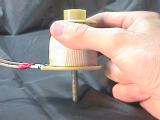
The construction would be the same as the DC electromagnet or AC electromagnet. The difference would be that instead of inserting a 3/4" diameter iron bolt into the middle of the coil, place a 2" long 1/4" bolt part way into the core, letting the bolt rest on the table as shown. The power can come from connecting it directly to the output of a variac, or by connecting the output of the variac to a diode bridge, and connecting the coil to the DC output terminals of the diode bridge. To smooth out the DC output, a capacitor can be connected in parallel with the coil. I prefer the DC connection since the coil is stronger without the AC impedance created by the varying voltage.
Demonstration:

As shown here, the power is turned on, causing the 1/4" bolt to be pulled into the middle of the air core of the solenoid. When the power is turned off, the bolt drops to the table.
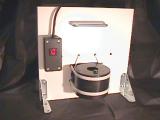
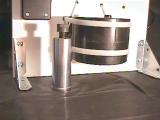
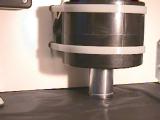
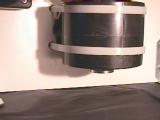
This shows the construction of a more powerful solenoid demonstrator. It uses a DC coil from a large contactor. The iron armature weighs about 2 pounds. When the power is turned on, the iron armature is pulled into the solenoid. If the solenoid were laid down onto its back, the iron armature can be pulled out part way from the solenoid and released, allowing it to be pulled back in just like it's attached to a spring. Great fun to play with!
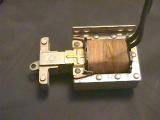

Here's a commercial solenoid from an appliance. Some spring or other mechanical action would be attached to the ring on the left. When energized, the armature is pulled in as shown on the right. When de-energized, the spring (or gravity) would pull the armature back out. This can be used for door locks, for home door chimes, actuators, and thousands of other things.
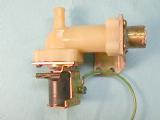
This is a solenoid from a dishwasher. When energized with 120Vac, it will open a valve allowing the water to fill the dishwasher. De-energizing it causes the valve to close, shutting off the water.
Conclusions:
A solenoid will hold an iron armature within its air core as long as there is power applied to it. When held vertically, the armature will be suspended in the air (but will be pulled to one side of the inside of the core). When de-energized, the armature will fall or be pulled back to its rest position.
Doorbells ![]()
Have you ever taken a close look at your doorbell? The one that goes "Bing-bong" for the front door button and just "Bing" for the back door button? How does it work? Why is the back door sound different? (It was made different so you would know if the back doorbell was being pushed instead of the front doorbell. But, how do they do that?)
I found an unused doorbell over at my in-law's basement and mounted it onto a board, along with two push buttons and a 19Vac plug-in power supply. This has been a great demonstrator for kids.
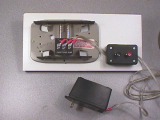


First, you will notice that there are two solenoids in this thing. One that is energized when the button at the front door is pushed (the one on the left in the photos), and one that is energized when the button at the back door is pushed. When a button is pushed, the solenoid is energized, pulling the iron armature into the coil, causing the end of the armature to hit the higher sounding (shorter) gong at the bottom. It then stays in the solenoid while the button is held closed. When the button is released, the spring on the armature pulls it out of the solenoid causing it to hit the lower sounding (longer) gong at the top. That is why there is a "Bing" when the button is pushed, and a "bong" when the button is released.
For the back door, it is almost identical. When the back door button is pushed, the iron armature on the right is pulled into its energized solenoid, causing it to hit the higher sounding gong at the bottom. Notice one thing, though. The spring on the back door armature has fewer turns, making it weaker than the spring for the front door. This was done on purpose. Also, there is a side marked "TOP" for this doorbell, with the lower sounding gong at the top, not at the bottom. So, when the back door button is released, the weaker spring on the armature pulls it out of the solenoid with little force, so it would not hit the lower sounding gong at the top with much force. Not only that, but the top end of the armature for the back door has a piece of cork on it instead of hard plastic, so that when it did hit the lower sounding gong, it would be muffled. This is why it goes "Bing" when the button is pushed, and "(quiet)" when the button is released. Pretty neat, huh?
Next time, try your doorbell to see if it also works this way. After a few minutes, your mom might ask you to stop, but let her know that you are doing engineering work figuring out how solenoids work. Then do what she asks you to do (like stop ringing the doorbell)!